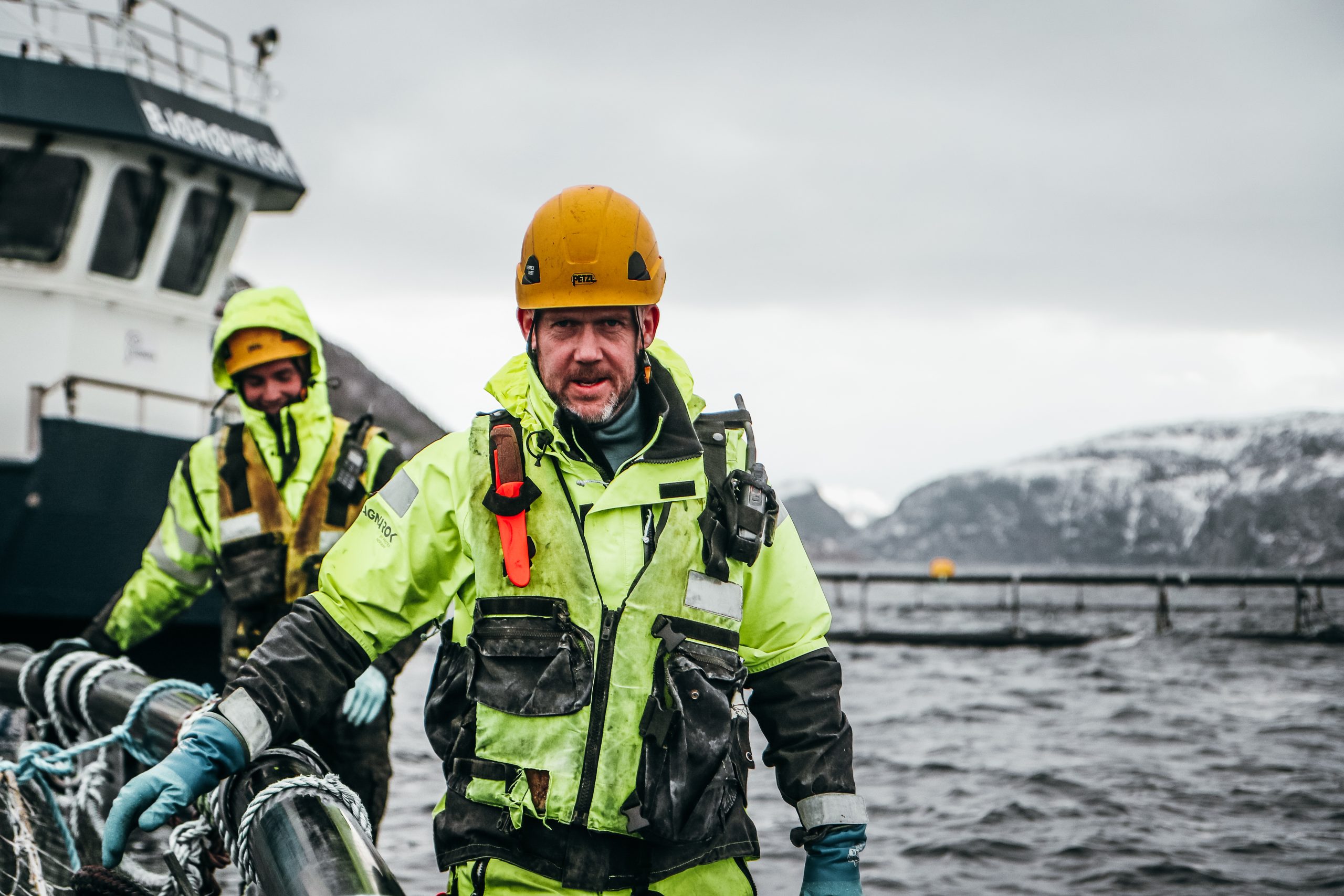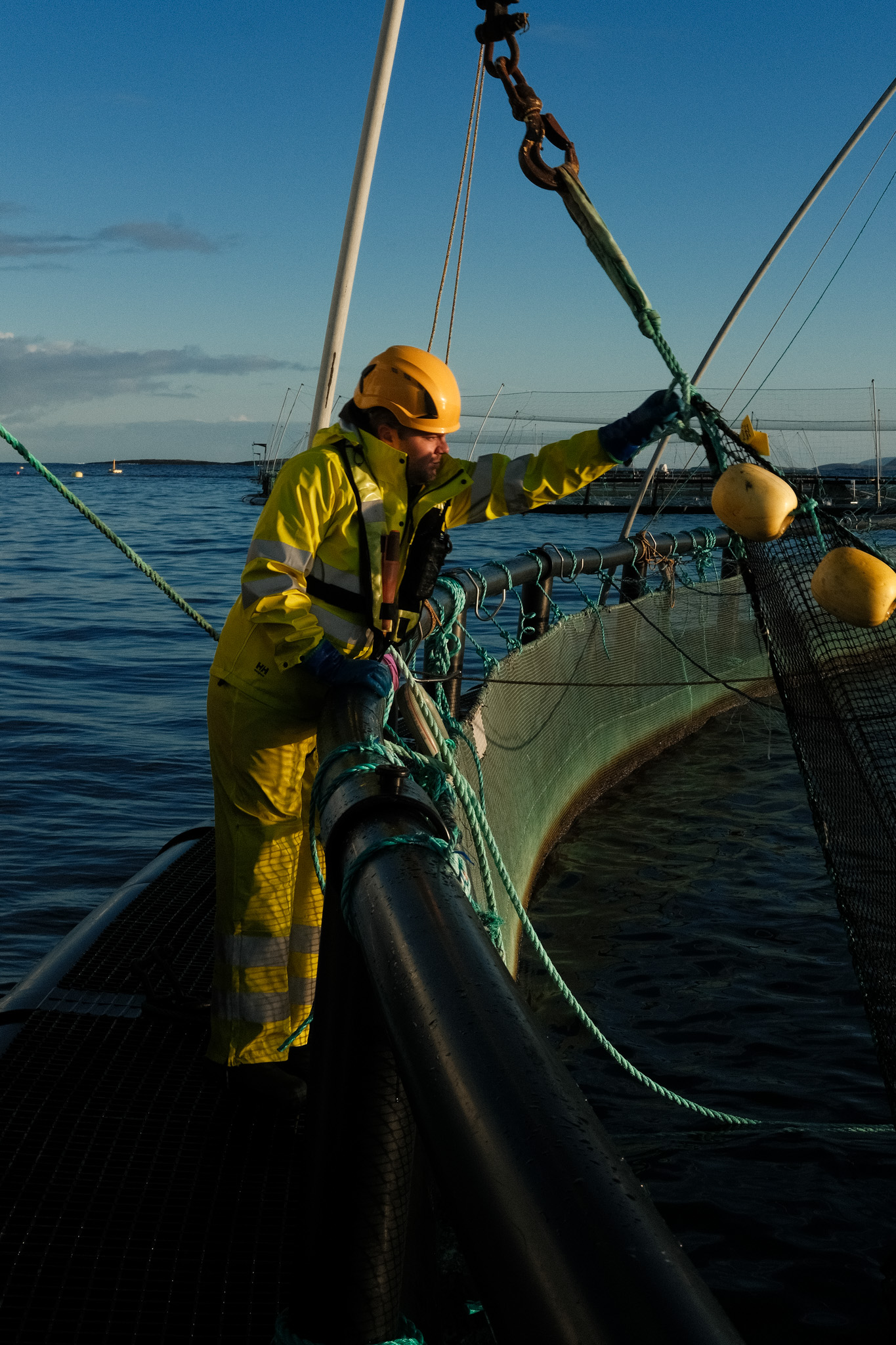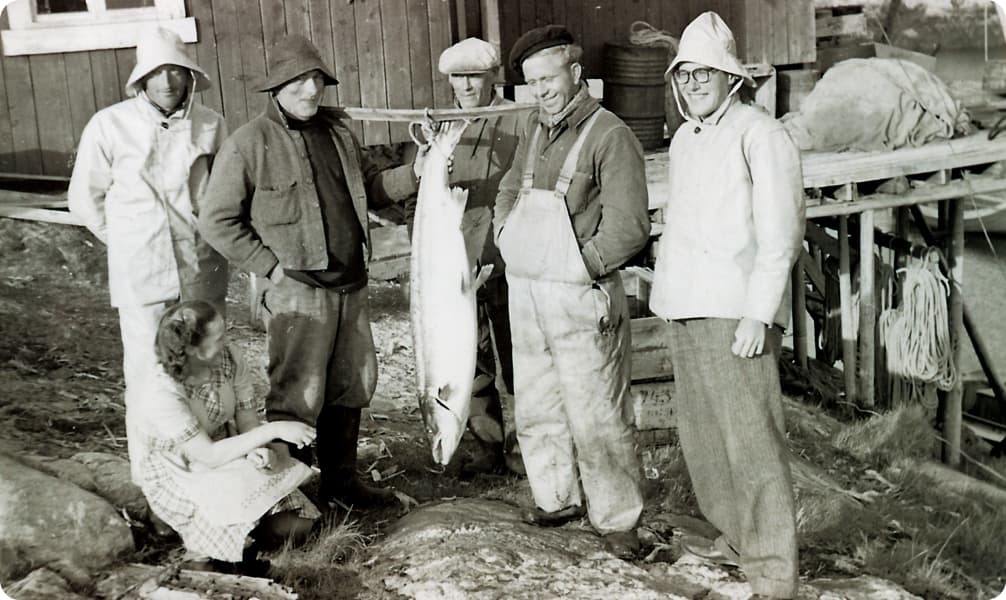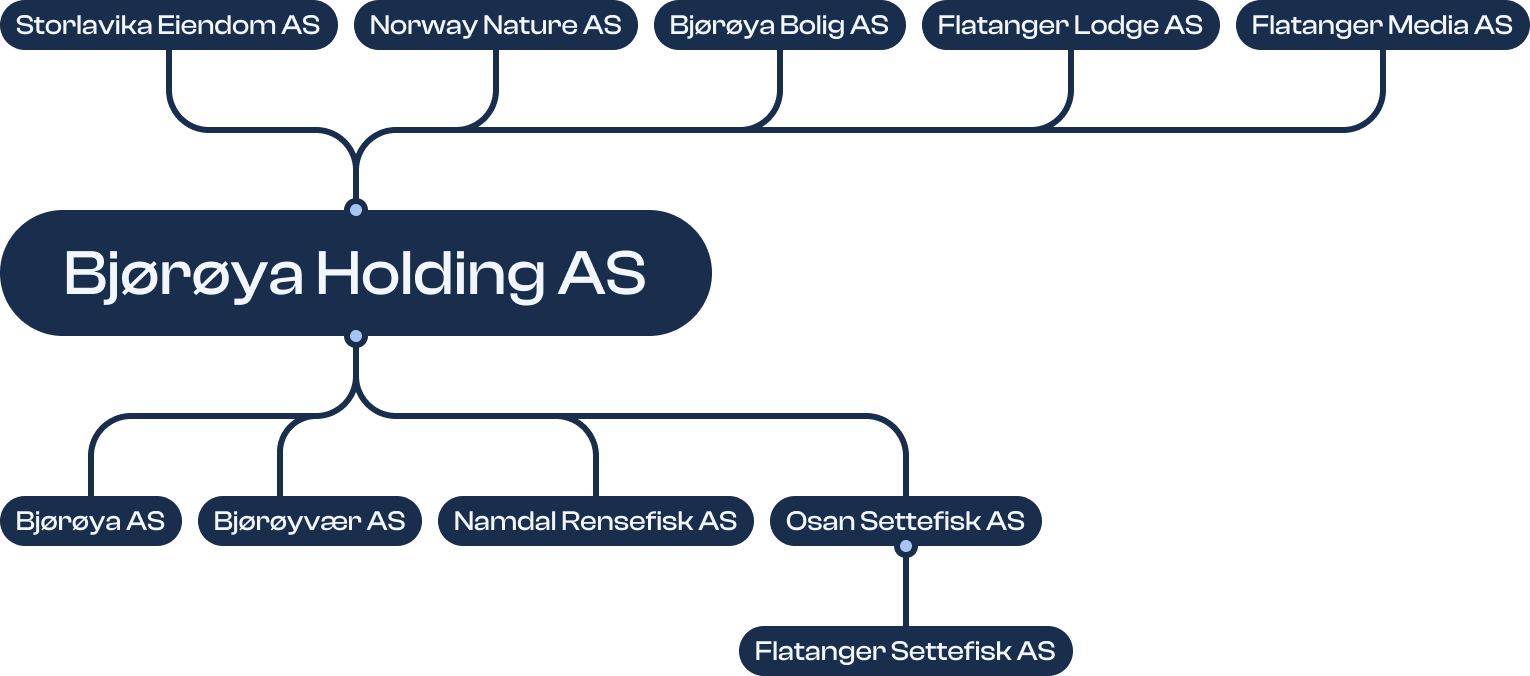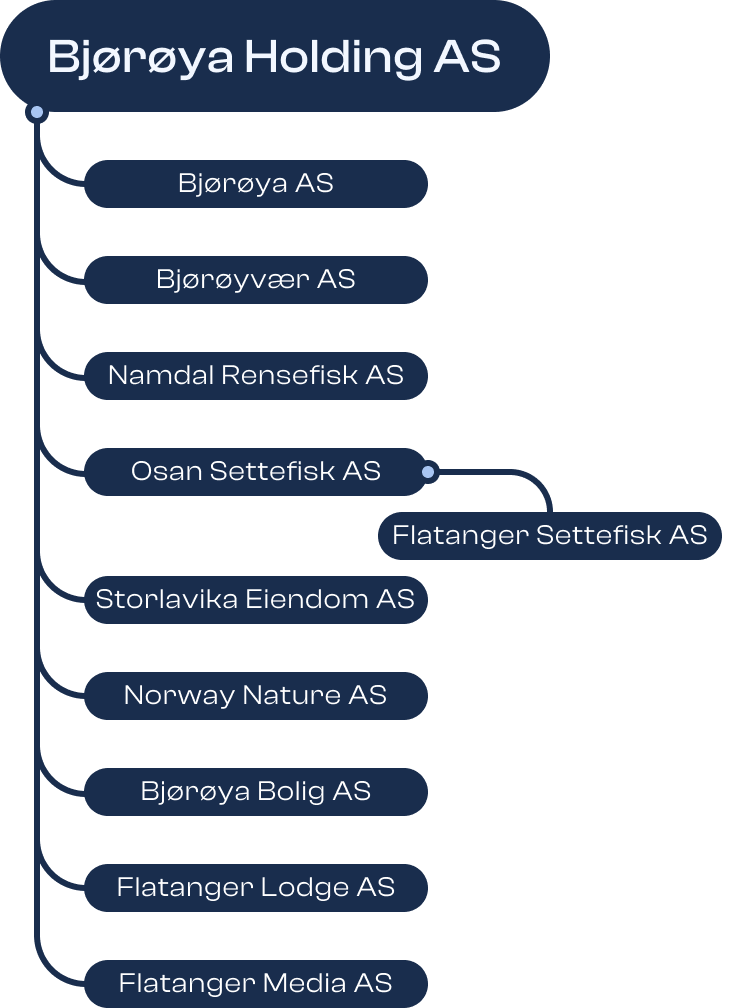Bjørøya is a well-run, family-operated farming company, headquartered in Flatanger.
Since its establishment in 1982, Bjørøya has been an active participant in and contributor to the development of the aquaculture industry.
We are proud of both our long history, and the work we have done that contributes to responsible salmon farming. We have a total of 13.4 concessions distributed across 11 sites, at which our 77 employees produce approximately 16,000 tons salmon every single year. This is equivalent to 220,000 meals of salmon for every single day of the 365 days in a year.
